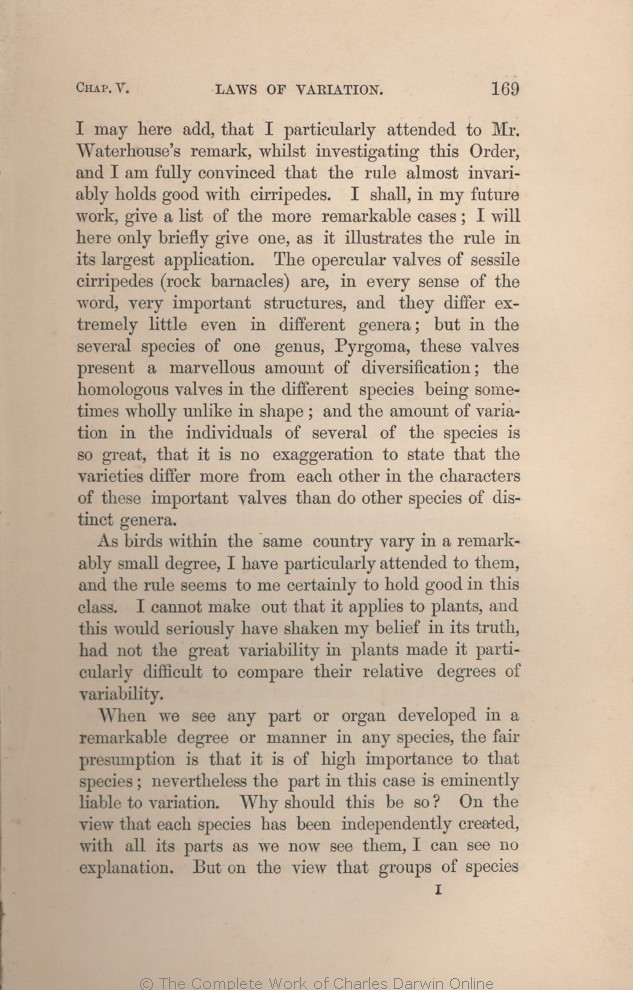I
may here add, that I | may here add, that I 1859 1860 1861 1866 |
| OMIT 1869 1872 |
| Waterhouse's 1859 1860 1861 1866 1872 | | Waterhouses 1869 |
| invariably 1859 1860 1861 1866 1869 | | always 1872 |
| good 1859 1860 1861 1866 | | good. 1869 1872 |
| with 1859 1860 1861 1866 | with 1869 1872 |
| cirripedes. 1859 1860 1861 1866 | cirripedes. 1869 1872 |
| my 1859 1860 1861 1866 | | a 1869 1872 |
| the 1859 1860 1861 1866 | | all the 1869 1872 |
| only briefly give 1859 1860 1861 1866 |
| only give 1869 |
| give only 1872 |
| different 1859 1860 1861 1866 1869 | | distinct 1872 |
| diversification; 1861 1866 1869 1872 | | diversification: 1859 1860 |
| several of the 1859 1860 1861 1866 |
| the same 1869 1872 |
| differ 1859 1860 1861 1866 1869 |
| of the same species differ 1872 |
| of 1859 1860 1861 1866 | | derived from 1869 1872 |
| valves 1859 1860 1861 1866 1869 | | organs, 1872 |
| other 1859 1860 1861 1866 1869 | | the 1872 |
| of 1859 1860 1861 1866 |
| belonging to 1869 |
| belonging to other 1872 |
|
|
As
birds within | birds within 1859 1860 1861 1866 1869 |
| with birds the individuals of 1872 |
| country vary in a remarkably small degree, 1859 1860 1861 1866 |
| country vary in a remark- ably small degree, 1869 |
| species, inhabiting the same country, vary extremely little, 1872 |
| them, 1859 1860 1861 1866 1869 | | them; 1872 |
| seems to me certainly 1859 1860 1861 1866 1869 |
| certainly seems 1872 |
| seriously have 1859 1860 1861 1866 1869 | | have seriously 1872 |
|
|
When we see any part or organ developed in a remarkable degree or manner in
any | any 1859 1860 1861 1866 1869 | | a 1872 |
| species; 1859 1860 1861 1866 1869 | | species: 1872 |
| the part 1859 1860 1861 1866 | | it is 1869 1872 |
| is 1859 1860 1861 1866 | is 1869 1872 |
|









